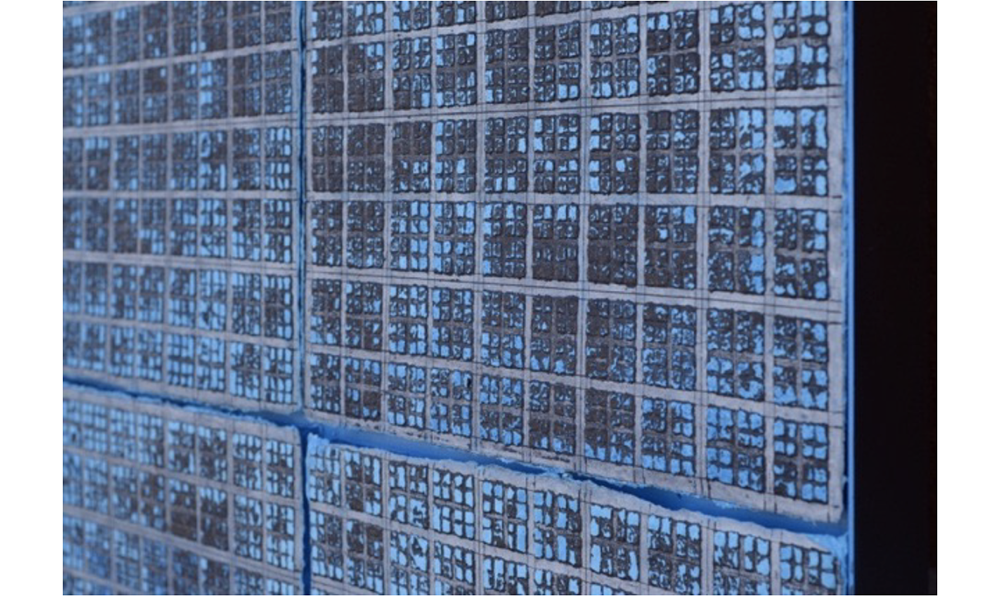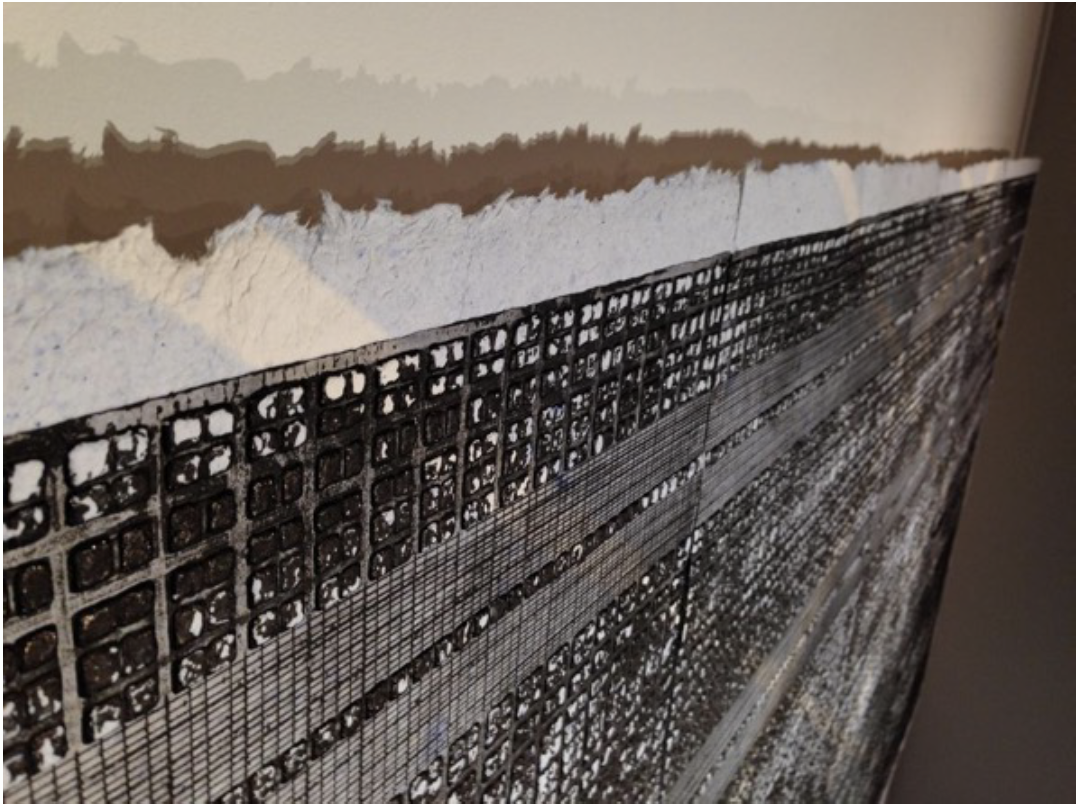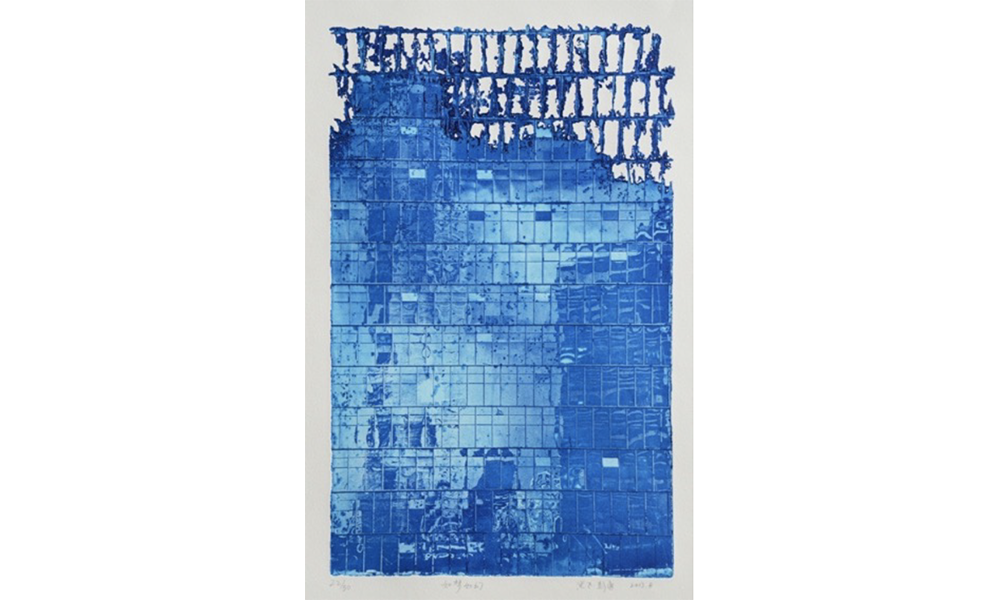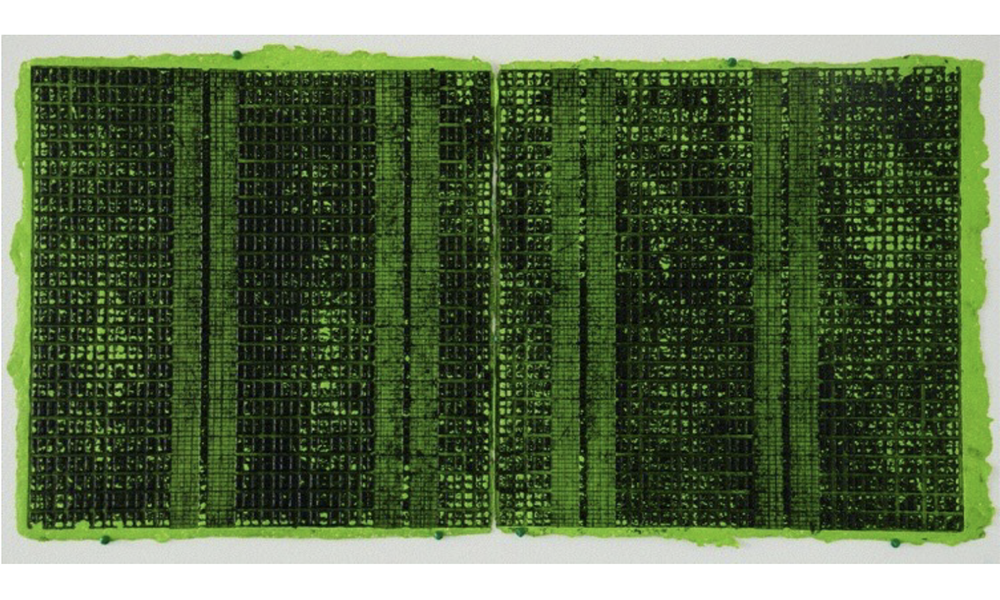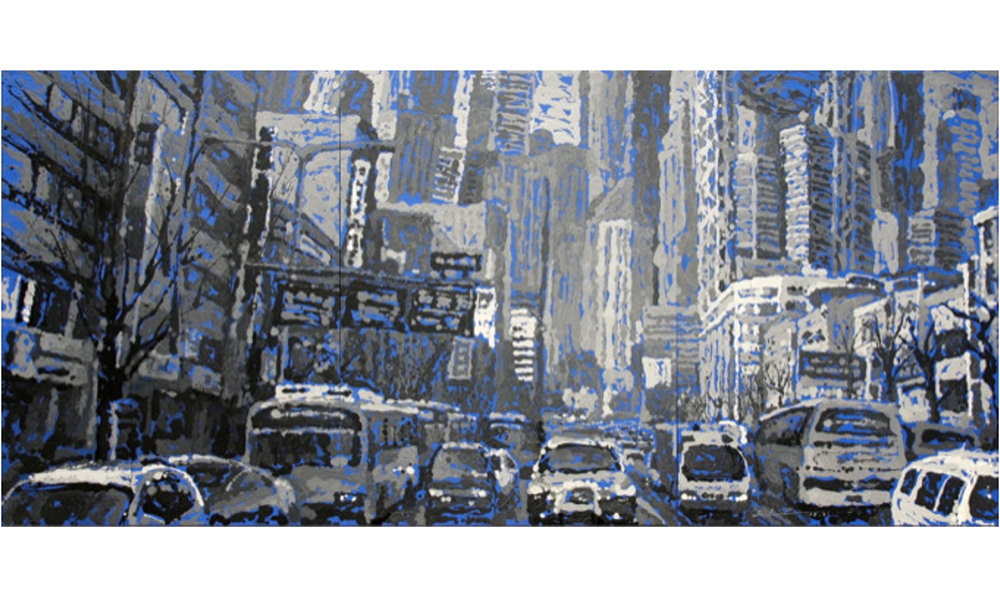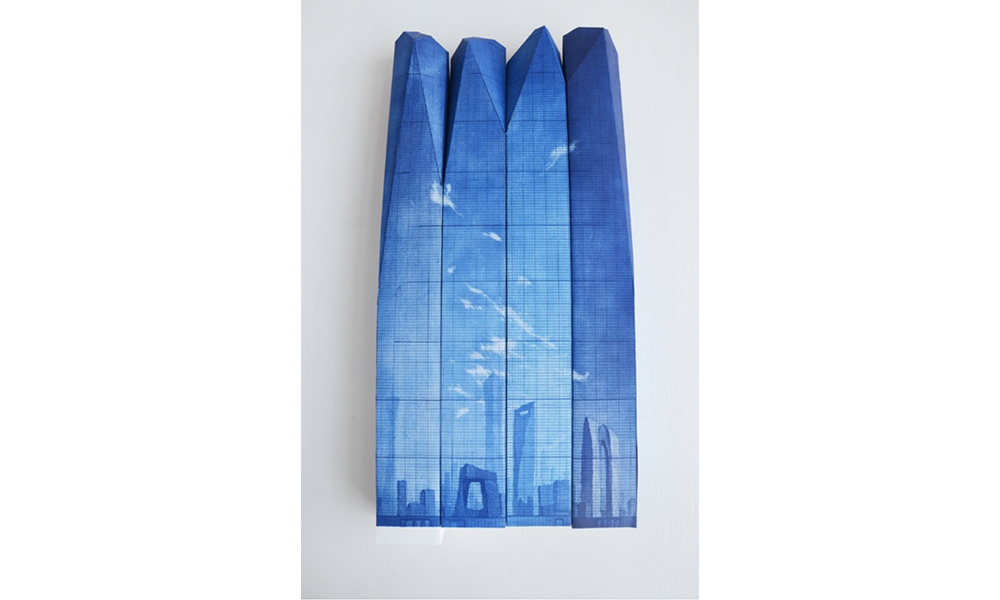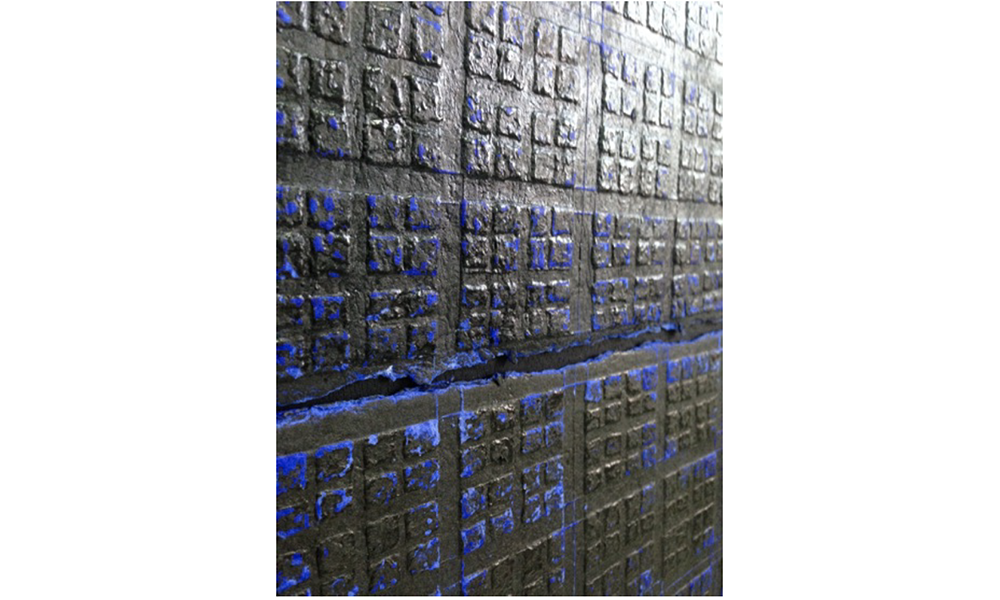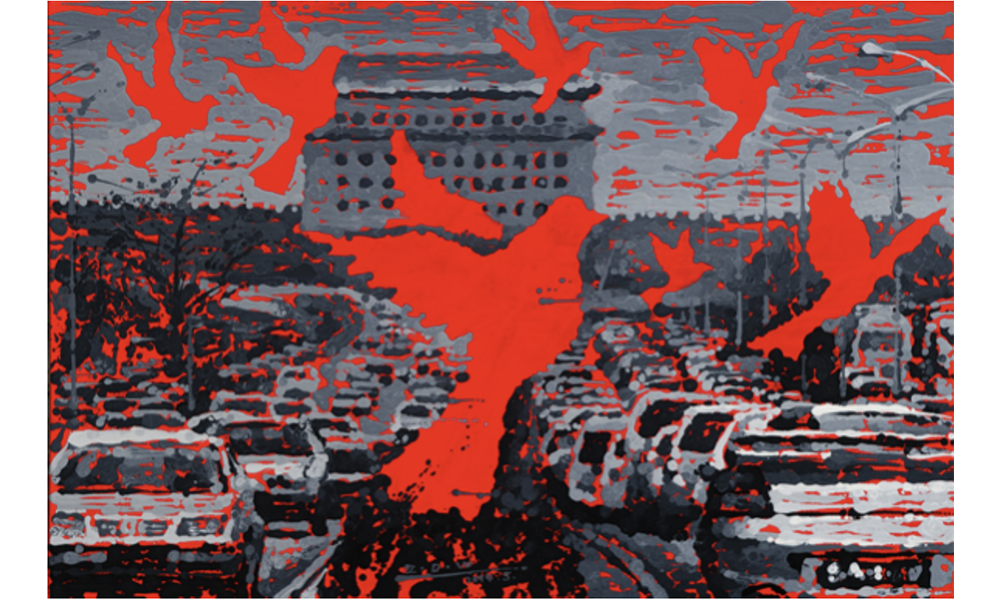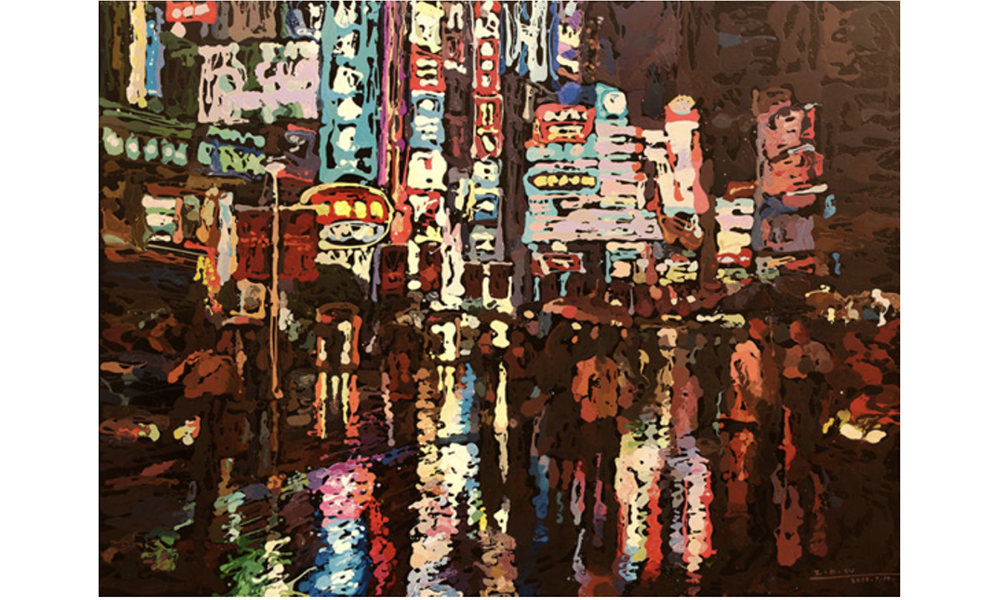MERCEDES BENZ FINANCIAL SERVICES CHINA
10TH ANNIVERSARY EXHIBITION
In the presence of Hubertus Troska (Member of the Board of Management of Mercedes-Benz Group AG. Greater China), Klaus Maier, President and CEO of Mercedes-Benz (China), Alex Mallmann (President and CEO of Mercedes-Benz Auto Finance China) and Wolf Bay (Daimler Financial Services China)
– URBAN DYNAMISM-
Peking Art Associates is honoured to present the diverse works of artists Zhao Dewei and Peng Yong in a two-man exhibition Urban Dynamism to celebrate the Tenth Anniversary of Mercedes Benz Financial Services in The People’s Republic of China. Questions of the urban condition lie at the heart of both artists’ oeuvre, yet their aesthetic solutions to addressing such questions are radically different. As if reflections in dappled water, the mature artist Zhao Dewei weaves urban stories steeped in narrative detail. By contrast, the young artist professor Peng Yong creates highly compacted, chimerical works that are predominantly symbolic, entirely devoid of figurative element. Yet behind both artist’s work lies the deeper philosophical practice of Zen Buddhism. Zen is both artists’ means of tackling the sheer scale of the urbanisation process of recent decades in China – probably faster and certainly on a grander scale than anywhere else in the world today, or indeed ever. This environment demands innovation of traditional art forms, be they oil painting (Zhao Dewei) or copper engraving and etchings (Peng Yong). From two successive generations and each in his unique way, artists Zhao Dewei and Peng Yong are responding to the challenge of capturing one of the most dynamic countries in one of the most dynamic periods of history.
Zhao Dewei was born in Shanghai in 1960 and in his youth moved to the coastal city of Qingdao. At the age of 25, he was elected Chairman of Qingdao Youth Artists Association, a position he held for four years until the Association was disbanded in 1989 during turbulent times, particularly for artists. In the years prior, Zhao Dewei had attended a City Workers cultural palace art academy in Qingdao after showing promise when awarded first prize in Qingdao city’s amateur art competition at the age of 18. Following his studies he encountered and was trained by eminent artists from the prestigious Lu Xun Art College, Shenyang. The seed had been planted. Upon graduating at 21, Zhao Dewei won the silver medal at a National Arts Exhibition and the First Prize at the Shandong provincial art competition. In the late 80s and 90s, Dewei went on to experiment with installation, video and performance art like many of his peers located in Beijing, but it was to oil painting that he would return and develop his artistic voice. Now with several dozen domestic and international exhibitions to his name and solo museum exhibition appearances in China, Dewei is seen as a veteran of the critical juncture in recent contemporary Chinese art history when Western Expressionism and Chinese Realism merged into one and Chinese artists utilised Eastern philosophy to meet the transformation to a Westernised, urban state.
It likely comes as no surprise that Dewei cites the ‘Action Art’ pioneer Jackson Pollock as a favourite and an influence. Dewei’s abstract colour-dashed motifs are obviously influenced by the American Expressionist, but there is another, deeper philosophical layer that speaks and most appeals to this artist. In experimenting with the genre, Zhao Dewei began to appreciate the connection between the subliminal, unintentional aspects of Abstract Expressionism and his practice of calligraphy and Zen Buddhism in finding a more optimistic solution to a post-modern social reality of emptiness. Dewei has said that he felt pure abstraction was not the key, but rather a fusion with Realism, and with control. Just as Zen decrees that human beings learn Enlightenment lies within and not without, not by philosophising or rational thought, nor by studying scriptures or taking part in worship rites, but by controlling one’s mind through meditation, Dewei gradually abandoned uncontrolled dispersal of pigment to canvas for a more disciplined approach. The result is work of moderated movement variegated through a single colour family, such as Bustling City and Evening Return or the vibrancy of the primary colours of red, green, and blue, All Means. The arteries of cities, their roads, along with the people and vehicles that flow through them, are the pulse of Dewei’s paintings in recent years. Their movement is reinforced by a fluid brushstroke and frequent device of contrasting grisaille city backgrounds to vibrant variegated strokes to the foreground.
Zhao Dewei has devoted his painting life to large-scale works that focus on urbanity in China and the figures that inhabit this space. It is pause for thought that whilst a country such as Great Britain has just five urban centres of more than one million people, currently China has ninety. The city of Chongqing has grown to become what is now the world’s largest municipality, with an estimated thirty-one million residents. Zhao Dewei has said that he feels restless if he doesn’t paint every day. Urbanity is not just a subject he depicts, but something he lives.
Peng Yong has made the transition from rural China to the capital just as millions make each year. Peng was born in 1984 in Shaoyang, southwestern Hunan Province. One of the major forestry areas in Hunan, almost half of Shaoyang is covered in forests and the ninety-three thousand square kilometres known as The Nan Shan Pastures is one of the biggest in southern China, providing dairy products and meat for the Hunanese. The young artist grew up in this environment, showing artistic flair at an early age which won him an undergraduate place at the Central Academy of Fine Art (CAFA) in Beijing. He went on to further gain his Masters degree in 2009 at CAFA’s Printmaking Department and Peng Yong now teaches at the School of Design, Tianjin Academy of Fine Arts, dividing his time between the metropoli of Beijing and nearby Tianjin. The passage from rural to urban life informs Peng Yong’s work and the person deeply. He is curious about the influence of modern society on the human psyche and specifically, the patterned nature of the life of city dwellers. He frequently explores our orderly, urbane existences through the patternation made possible through engraving, and the reenactment of strong graphicism through his fastidious drawing practice. This interest has culminated in the series, Urban Menghuanpaoying.
Peng’s traditional copper engravings, engravings enhanced by synthetic materials and pen drawings all share the quality of the dense, highly-structured environment that inspires them. The symmetry of city skyscrapers, the residential and commercial buildings that are the architectural landscape the length of the new Middle Kingdom are the forms Peng Yong takes as his starting point:- from highly regulated (Stars of the City, 都市星⾠辰), to semi-abstracted Metropolis V (都市-之五), to fully abstracted to the point of taking the appearance of cascades falling in City Blues III (蓝-之三). Peng Yong’s penchant for networked grid patternation graphically implies ordinance maps, roads and the matrix of a planned, modern city. It also symbolises a connected, networked, and harmonised society. Like Zhao Dewei, Peng Yong is fascinated by Buddhist practice and its applications for an artist. In Peng Yong’s case, he is drawn to the notion that by repeating a phrase chanted, and by associated meditation (熏修) one may obtain a gradual enlightenment, and a level of purification or a more pristine self. The repeated practice of fine line drawing is the artistic equivalent to chant-based meditation. The artist is all-focused on a mind-clearing activity, just as in meditation, and if his or her mind slips onto something else likely the pen will too. Such intensity demands that the artist, like the practitioner of meditation, slow down and, like any focused activity, the result is deep tranquility.
Beyond the unfussy form of urban architectural lattice Peng Yong manages to achieve mystery in his work and this is testament to his rigorous technique and sense of coloration, particularly shading. Deserting the City III (废都之梦幻泡影三) with its layers of synthetic materials takes on a simultaneously futuristic and archeological quality, as does Stars of the City III (都市星⾠辰之三). The texture of handmade paper with the gritty quality of natural fibre and organic, undulating edges only lends to this sense of past-future layering. The fact that this artist has chosen a very traditional technique in the form of copper engravings on the material of handmade paper to explore modern urbanisation makes the material contemporary and his incorporation of synthetic materials reveals new qualities about it. It also gives a keen sense of temporality, of history moving from old to new. In translating the modern ‘China Dream’ Peng Yong also skilfully employs colour and moreover, contrast in colour. Monochrome bases are frequently offset by a luminescence in Peng Yong’s work through the application of fluorescent acrylic pigment to give the appearance almost of chimera, for instance City Green (绿) and his large pen drawing on handmade paper Dreams of the City II (都市之梦幻泡影2). It is as if the city is a formidable, all-pervasive background to the bearer of a myriad of star-lit dreams. Peng’s attention to detail is meticulous, from the reflection on a skyscraper window in Like A Dream I (如梦如幻 之⼀) to the hand-drawn lines forming a near-perfect grid in the pen print Fusion Cities. The concept of the penetrating metropolis has also been explored by Peng Yong through site-specific installations in past exhibitions, works that organically expand to the sides of walls and up to ceilings.
In the past two years, Peng Yong has seen the start of celebrated success. In 2014 he was the Winner of the ART 8 China Prize and made appearances at Art Nova 100, a high-end art platform that discovers and promotes young artists, and The Biennale China – Italia. He has also appeared at the Yuan Art Museum’s ‘The Experimental Field CAFA Graduate Exhibition’, Beijing and in 2013, Peng Yong’s Tower of Babel was exhibited at the Guanlan International Printmaking Biennial, Shenzhen. We look forward to witnessing how he will develop aesthetically and materially develop the concept of urbanity in future works.
– Emily de Wolfe Pettit, Founder, Peking Art Associates
